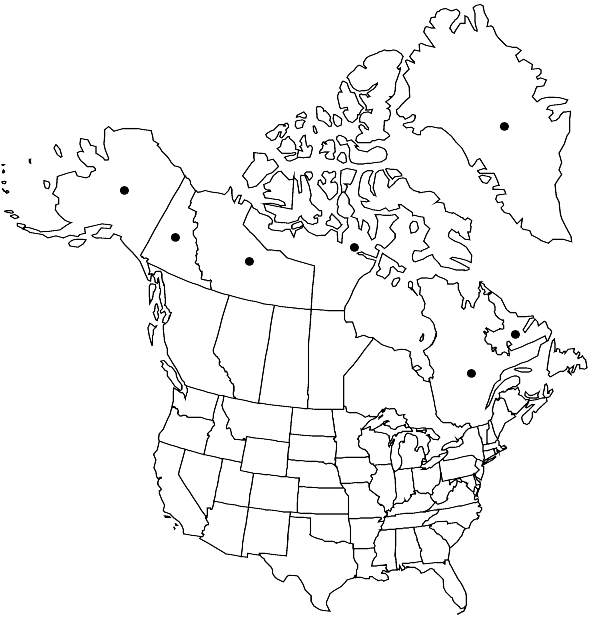Polytrichum hyperboreum
Chlor. Melvill., 36. 1823,.
Plants small to fairly robust, green to attractive chestnut brown with age. Stems 2–6(–10) cm, simple or more commonly fasciculately branched, whitish tomentose only at base. Leaves 3–6 mm, crowded in distal half stem, erect and closely appressed when dry, erect-spreading when moist; sheath rectangular, abruptly contracted to the blade; blade linear-lanceolate, rather flat, with sharply infolded margins, channeled at the apex and tapering to the bicolored awn; marginal lamina 7–9 cells wide, 1-stratose, entire, membranous, infolded and overlapping, completely enclosing the lamellae; costa excurrent with low blunt teeth abaxially near apex, the awn coarsely spinulose at the base, brown in the basal 1/3 to 1/2, hyaline distally; lamellae 5–9 cells high, the marginal cells in section ovoid, somewhat larger than cells below, thin-walled or very slightly thickened at apex; median sheath cells 45–90 × 12–15 µm, narrowly rectangular, thin-walled; cells of marginal lamina 10–15 × 24–45 µm, thick-walled, obliquely oriented and shorter toward the margin and thin-walled. Sexual condition dioicous; perichaetial leaves elongate, with hyaline lamina and long, tapering awn. Seta rather short for plant size, 1.2–3 cm, reddish. Capsule 2.3–3 mm, ovoid-rectangular (1.2–2:1), somewhat broader at base, sharply 4(–5)-angled, erect, becoming inclined to horizontal when mature; peristome 150–230 µm, divided to 0.6, the teeth pale brownish, acute. Spores 15–17 µm.
Habitat: Open sandy or stony ground, ridges, moraines, and open tundra, and in deep masses on stream banks and margins of lakes and ravines
Elevation: low to moderate elevations (0-1500 m)
Distribution

Greenland, Nfld. and Labr. (Labr.), N.W.T., Nunavut, Que., Yukon, Alaska, n Europe (Scandinavia), n Asia (Russia).
Discussion
Polytrichum hyperboreum is a handsome species, widespread in arctic America. Sporophytes are commonly produced. In Nunavut, it is known from Baffin, Ellesmere, and Melville islands. The most distinctive characters are the branching habit, channeled leaf apex, and the distinctive bicolored awn, which is coarsely and thickly spinulose at the base, brownish below and hyaline in the distal 1/2. In P. juniperinum, P. strictum, and P. piliferum the awns are ± evenly roughened throughout to almost smooth. It differs from these species also in the rather thin-walled, ovoid marginal cells of the lamellae, and the broad marginal laminae overlapping and completely enclosing the lamellae.
Selected References
None.
